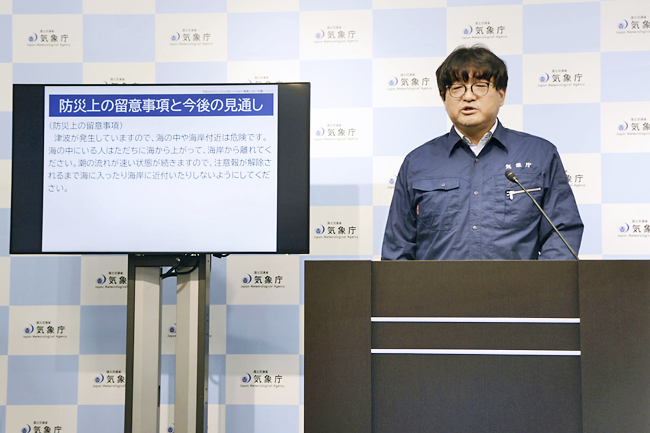TOKYO (AFP) – A small tsunami was observed on the remote Japanese island of Hachijojima on Tuesday, the weather agency said, after a 5.6-magnitude earthquake struck near the Izu Islands chain.
Waves of 50 centimetres (cm) hit Hachijojima at around 9am, after the Japan Meteorological Agency (JMA) issued a tsunami alert for the region south of Tokyo.
The small tsunami was observed around 45 minutes after the earthquake, which the United States Geological Survey said had a shallow depth of 11.7 kilometres.
On Miyakejima Island, an even smaller tsunami wave of 10cm was measured, the JMA said.
Around 25,000 people live on small Pacific islands south of Tokyo. Some residents told national broadcaster NHK that they did not feel the earthquake, and there were no immediate reports of damage. The JMA said Japan’s vast Pacific coastline from Chiba near Tokyo to Okinawa may also observe slight changes to the ocean surface following the earthquake.

Japan sits on four major tectonic plates and experiences around 1,500 quakes every year, most of them minor.
The impact is generally contained even with larger tremors thanks to advanced building techniques and well-practised emergency procedures. But a potential mega-quake with an estimated magnitude of 8-9 has a roughly 70 per cent probability of striking within the next 30 years, the government said.
It could affect a large swath of the Pacific coastline and threaten an estimated 300,000 lives in the worst-case scenario, experts said.
In 2011, a colossal 9.0-magnitude undersea quake off northeastern Japan triggered a tsunami that left around 18,500 people dead or missing.


